Idaho Premier
Window Cleaning
Keep Boise Clean.
Get An Instant Quote!
Helpful Tip – Back up far enough in each picture so we can see each side of your property in one picture as best as possible.
1. Take Pictures
Of all sides of your homes - exterior only.
2. Text 208.409.0594
Text your pictures to 208-409-0594.
3. We Reply
We will reply within 24 hours with your quote.
Our Cleaning Services
Window Cleaning
Residential | Commercial New Construction | High Rise
Whether it be for your home or your workplace, Idaho Premier Window Cleaning wants to provide you with the best window cleaning services in the Boise area! We are fully licensed and insured and promise to send trustworthy, friendly, and professional window cleaners to your home or business. Our team is respectful of your time, personal belongings, and property. Learn more about our standard and premier window cleaning services & our annual subscription packages.
Gutter Cleaning
Let us clean your gutters & protect your home.
When was the last time you had your gutters cleaned by a professional? Idaho Premier Window Cleaning does more than just clean gutters- we inspect all areas of your gutter system to check for integrity. Don’t put your home at risk for foundation issues, water damage, or roof destruction.
Power & Soft Washing
Let us handle the dirty work.
Make your home or workplace shine with our power & soft washing services. At Idaho Premier Window Cleaning, we use power washing to remove tough stains and debris from ground surfaces and then use soft washing to clean building exteriors damage-free. Unlike pressure washing, soft washing is a safe and effective way to clean building exteriors squeaky-clean without harm.
RainGuard Tech
Add extra protection to your windows
Our IP Rainguard Tech. creates a protective coating on your glass, helping to repel water and debris. This special solution is key to keeping your windows cleaner for longer.
Why Choose Idaho Premier Window Cleaning?
Idaho Premier Window Cleaning was founded by Idaho native Anthony Avalos in 2016, and has grown to become Idaho’s favorite local window cleaning company. The team at IPWC takes pride in the work and services they provide, with a mission to keep Bosie as clean as possible. They have a passion for supporting the community and are eager to provide services that please time and time again.
What Happy Clients Are Saying
- Locations -
Area of Services
Boise, Idaho
Eagle, Idaho
Meridian, Idaho
Star, Idaho
Nampa, Idaho
Caldwell, Idaho
Garden City, Idaho
Kuna, Idaho
McCall, Idaho
@ipwindowcleaning
- Contact us -
We’d love to hear from you!
Don’t hesitate to contact us.
Use the form below to send us a message.
